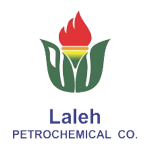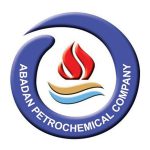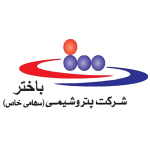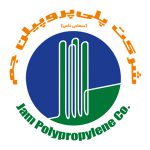MEA
Monoethanolamine (MEA) MEA is a chemical compound classified as one of the amines. It consists of a hydroxyl group (-OH) and an amine group (-NH2), placing it within the family of amines. Monoethanolamines are considered a category of amino alcohols. Compounds such as antihistamines, diphenhydramine, chlorphenoxamine, dimenhydrinate, and others are derived from ethanolamines. The chemical formula of this material is C2H7NO. this material has 1.01 gr/cm3 density and 61.1 gr/mol molecular weight. MEA is used in various fields, including the oil, gas, petrochemical industries, pharmaceuticals, and power generation. It serves as a gas-absorbing agent, is involved in the production of pharmaceutical compounds, and is utilized for CO2 production in power plants, among other applications. This material is typically made industrially. In the production process, aqueous ammonia is used to purify ethylene oxide. MEA, DEA, and TEA are the three distinct chemicals that are produced in this process. For more information on MEA prices and ordering methods, you can contact the experts at Petro Nour Mehr Company.
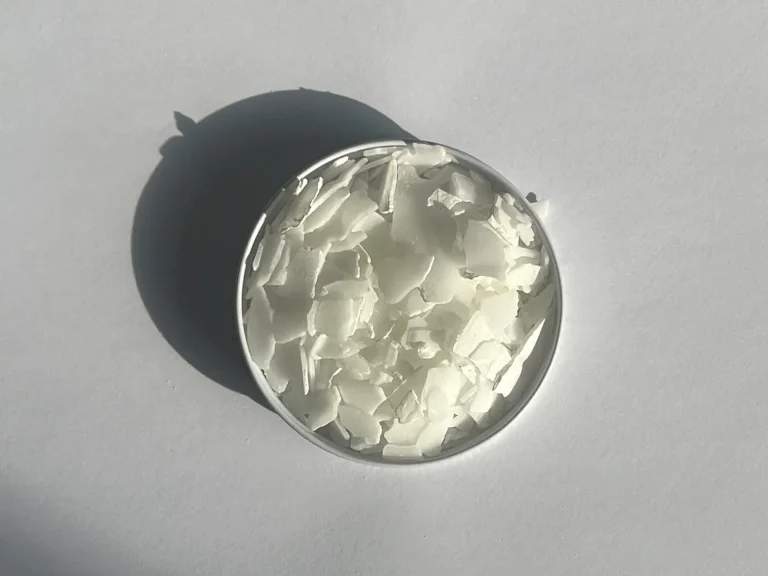
MEA Manufacturers in Iran
In the petrochemical industry of Iran, several companies and production units are engaged in the production of MEA. These companies include:
- Shazand Arak Petrochemical Company
These units are among the largest MEA producers in Iran and play a significant role in supplying domestic needs and exporting this material to global markets.
MEA Manufacturers Worldwide
MEA is a chemical compound used in various industrial applications, including as a gas treatment agent, in the production of surfactants, and in pharmaceuticals. Here are some notable manufacturers of monoethanolamine worldwide:
These companies are recognized for their production capabilities, adherence to quality standards, and global distribution networks, ensuring the availability of monoethanolamine for various industrial and commercial uses.
Applications of MEA
This chemical compound finds numerous applications across various industries due to its versatile properties. Some of the key applications of this material include:
- Gas Treating: This material is commonly used in gas treating processes to remove acidic gases such as carbon dioxide (CO2) and hydrogen sulfide (H2S) from natural gas, refinery gases, and other industrial gas streams. It reacts with acidic gases to form stable salts, which can be regenerated for reuse.
- Surfactants and Detergents: This material is utilized in the production of surfactants and detergents due to its ability to lower surface tension and enhance wetting properties. It is incorporated into formulations for various cleaning and personal care products such as shampoos, soaps, and laundry detergents.

- Chemical Intermediates: MEA serves as a chemical intermediate in the synthesis of various compounds. It is used in the production of ethyleneamines, which are important building blocks for the manufacture of adhesives, coatings, lubricants, and corrosion inhibitors.

- Textile Processing: MEA is employed in textile processing as a swelling agent and as a catalyst in certain dyeing processes. It aids in the absorption and fixation of dyes onto textile fibers, improving color fastness and dye penetration.

- Pharmaceuticals: MEA is used in the pharmaceutical industry as a precursor for the synthesis of certain drugs and pharmaceutical intermediates. It may also be included in formulations as an excipient or as a pH adjuster in certain drug formulations.
- Metalworking Fluids: MEA can be incorporated into metalworking fluids as a corrosion inhibitor to protect metal surfaces from corrosion and degradation during machining, cutting, and grinding operations.
- Cosmetics and Personal Care: MEA is utilized in the formulation of cosmetics and personal care products such as creams, lotions, and hair care products. It helps to adjust pH, stabilize formulations, and improve product texture and consistency.

- Adhesives and Sealants: MEA is used in the production of adhesives and sealants, where it serves as a curing agent or as a component in epoxy resin formulations. It contributes to the adhesive strength, flexibility, and durability of the final products.

These are just some of the many applications of monoethanolamine across various industries, highlighting its importance as a versatile chemical in industrial processes and consumer products.
Storage Conditions for MEA
There are some guidelines for better preservation of its quality:
- It is ideal to keep these materials dry and cool; a temperature of less than 25 is preferable for storage.
- Keep this material out of direct sunlight and ultraviolet light, since these sources of light may alter its chemical and physical characteristics.
- These substances react with acids and solvents, among other compounds. It is therefore recommended to stay away from direct contact with these kinds of compounds.
- During storage and transportation, ensure that this material is protected from scratches and impacts, as physical damages can lead to changes in its structure and chemical properties.
- Packaging for this grade should be made of suitable material to protect it from environmental changes and reduce the penetration of water and air into the packaging.
- Certain items can need particular storage conditions. Consult the manufacturer’s directions in this situation.
Packaging for MEA
MEA is typically packaged in containers that are compatible with its chemical properties and safe for transportation and storage. The packaging for MEA should meet certain requirements to ensure its integrity, safety, and regulatory compliance. Here are some common types of packaging used for MEA:
- Drums: MEA is often packaged in metal drums made of materials such as stainless steel or carbon steel. Drums provide a sturdy and durable packaging option suitable for handling and transportation of bulk quantities of MEA. They typically come in various sizes ranging from 200 liters drums to larger capacities.
- Intermediate Bulk Containers (IBCs): IBCs, also known as tote tanks or bulk containers, are large, rigid containers made of materials such as HDPE or composite materials. They offer a cost-effective and space-efficient packaging solution for transporting and storing intermediate quantities of MEA.
- Cans/Bottles: MEA may be packaged in smaller cans or bottles made of metal or plastic for retail or consumer applications. These containers are typically used for packaging MEA-based products such as household cleaners, detergents, and personal care products.
Regardless of the type of packaging used, it is important to ensure that the containers are properly sealed, labeled, and compliant with relevant regulatory standards for the safe handling, transportation, and storage of MEA. Additionally, proper safety precautions should be followed when handling and storing MEA to prevent exposure and ensure the integrity of the packaging.
Advantages and Disadvantages of MEA
This material is a versatile chemical compound with various industrial applications. Here are some of its advantages and disadvantages:
Advantages:
- Versatility: It is used in diverse industrial applications, including gas treatment (e.g., CO2 capture), surfactant production, chemical intermediates, and as a solvent in various processes.
- Gas Treating Agent: This material is commonly used in gas scrubbing processes to remove acidic gases such as carbon dioxide (CO2) and hydrogen sulfide (H2S) from natural gas and refinery gases, contributing to environmental protection and safety.
- Corrosion Inhibition: It can act as a corrosion inhibitor in certain applications, protecting metal surfaces from degradation and extending the lifespan of equipment and infrastructure.
- Surfactant Properties: This material can function as a surfactant, reducing surface tension and enhancing the wetting and spreading properties of formulations in industries such as cosmetics, detergents, and personal care products.
- Chemical Intermediate: It serves as a precursor for the synthesis of other chemicals, including ethyleneamines, which are used in various applications such as adhesives, coatings, and textile processing.
Disadvantages:
- Toxicity: This material can be hazardous to human health if handled improperly or in high concentrations. It can cause irritation to the skin, eyes, and respiratory system and may have adverse effects if ingested or absorbed through the skin.
- Corrosiveness: In concentrated forms, MEA can be corrosive to certain metals and materials, leading to degradation and damage to equipment and infrastructure if not properly managed and monitored.
- Environmental Impact: The production and use of MEA may have environmental implications, particularly in terms of energy consumption, waste generation, and emissions associated with its manufacture and processing.
- Cost: This material production can be energy-intensive and may require specialized equipment and processes, leading to relatively high production costs compared to other chemicals. This cost factor may influence its competitiveness in certain markets.
- Regulatory Compliance: It is subject to regulatory requirements and standards governing its production, handling, transportation, and disposal, which may add complexity and compliance costs for manufacturers and users.
Despite these disadvantages, MEA continues to be an essential chemical in various industries due to its unique properties and versatility, with ongoing efforts to address associated challenges through improved technology, safety practices, and environmental stewardship.
Physical and Chemical Properties of MEA:
This material is a versatile compound with various physical and chemical properties that make it useful in a wide range of industrial applications. Here are some of its key physical and chemical properties:
Physical Properties:
- Appearance: It is typically a clear, colorless to pale yellow liquid at room temperature.
- Odor: It has a characteristic ammonia-like odor.
- Boiling Point: The boiling point of MEA is approximately 170-171 .
- Solubility: This material is miscible with water and many organic solvents, making it highly soluble in both polar and non-polar substances.
- Viscosity: It has a relatively high viscosity, especially at lower temperatures.
- pH: In aqueous solutions, It is basic and typically has a pH around 10-11.
Chemical Properties:
- Chemical Formula: The chemical formula of monoethanolamine is C₂H₇NO, indicating its composition of two carbon atoms, seven hydrogen atoms, one nitrogen atom, and one oxygen atom.
- Functional Groups: This material contains both amine (-NH₂) and hydroxyl (-OH) functional groups, making it a primary amine and an alcohol simultaneously.
- Hydrogen Bonding: This material molecules can form hydrogen bonds with water molecules and other polar compounds, contributing to its solubility and chemical reactivity.
- Reactivity: It is reactive with acids, forming salts known as ethanolamines. It can also undergo various chemical reactions, such as alkylation, esterification, and amidation, making it a versatile building block in organic synthesis.
- Heat Stability: It is relatively stable under normal conditions but may decompose at high temperatures, releasing toxic gases such as ammonia and nitrogen oxides.
Understanding the physical and chemical properties of MEA is essential for its safe handling, storage, and use in various industrial applications, including gas treatment, surfactant production, and chemical synthesis.
How to Buy Polyethylene?
- Buy from a reputable and authorized supplier that holds necessary certifications and guarantees quality.
- Compare the prices of these materials in different markets and compare them with the global market price.
- Examine the sales conditions regarding quantity, delivery time, packaging, transportation methods, and payment terms.
- If you intend to import polystyrene from foreign countries, investigate customs and legal regulations and comply with export and import regulations.
- Contact bravopolymer to obtain the most suitable export price based on your conditions.
- After signing the contract, you can place your order.
- Secure and suitable payment methods according to customer preferences are provided by the company.
- Then, the loading stage is completed by selecting and introducing a transport company.
- Necessary documents for customs clearance at the destination city are also provided to customers by bravopolymer.
The largest distributor of polymers in the Middle East



